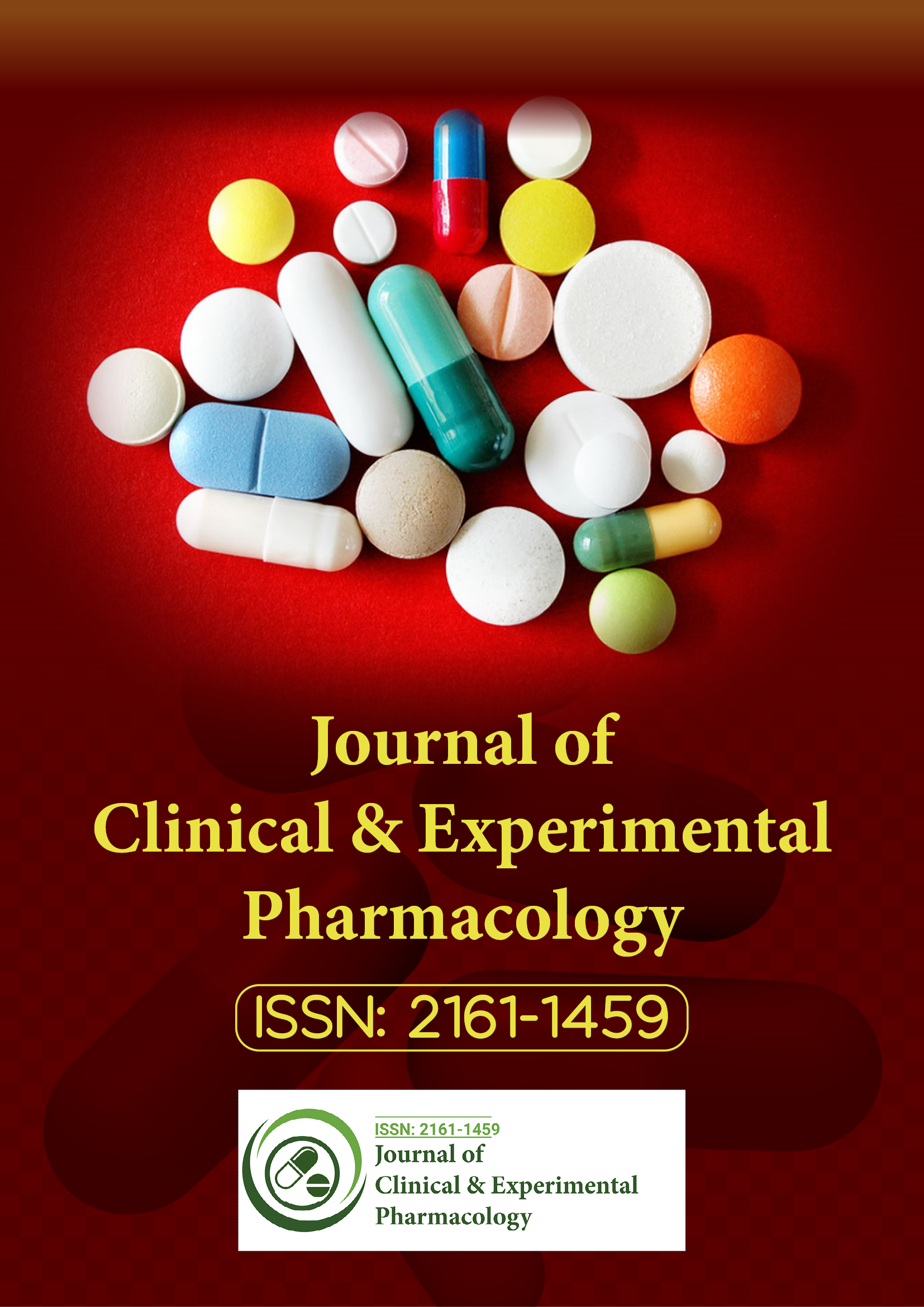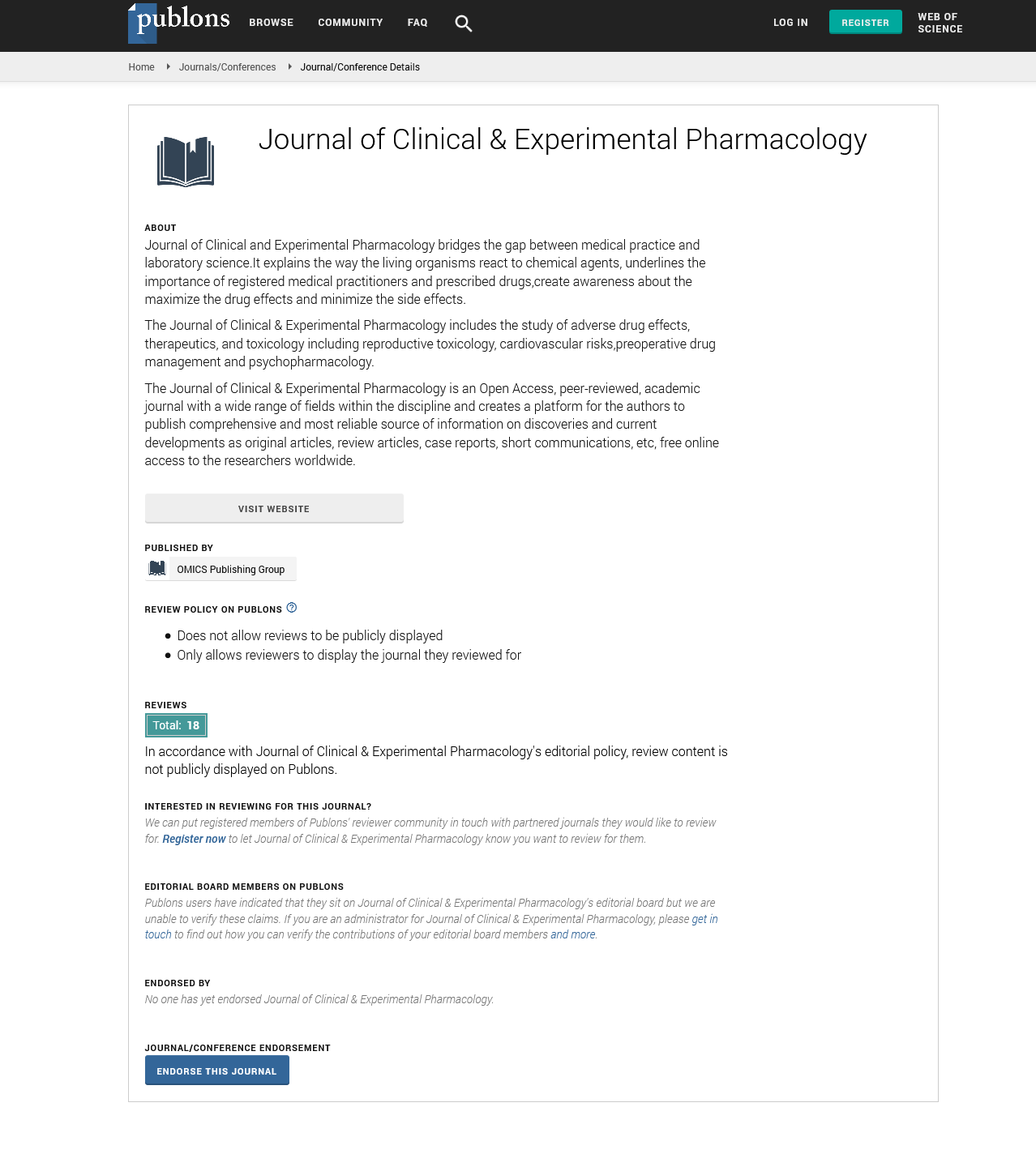Indexed In
- Open J Gate
- Genamics JournalSeek
- China National Knowledge Infrastructure (CNKI)
- Ulrich's Periodicals Directory
- RefSeek
- Hamdard University
- EBSCO A-Z
- OCLC- WorldCat
- Publons
- Google Scholar
Useful Links
Share This Page
Journal Flyer

Open Access Journals
- Agri and Aquaculture
- Biochemistry
- Bioinformatics & Systems Biology
- Business & Management
- Chemistry
- Clinical Sciences
- Engineering
- Food & Nutrition
- General Science
- Genetics & Molecular Biology
- Immunology & Microbiology
- Medical Sciences
- Neuroscience & Psychology
- Nursing & Health Care
- Pharmaceutical Sciences
Commentary - (2025) Volume 15, Issue 4
Medicinal Chemistry: Designing Molecules for Therapeutic Innovation
Simon Will*Received: 01-Aug-2025, Manuscript No. CPECR-25-29874 ; Editor assigned: 04-Aug-2025, Pre QC No. CPECR-25-29874 (PQ); Reviewed: 19-Aug-2025, QC No. CPECR-25-29874 ; Revised: 27-Aug-2025, Manuscript No. CPECR-25-29874 (R); Published: 05-Sep-2025, DOI: 10.35248/2161-1459.25.15.491
Description
Medicinal chemistry is a multidisciplinary field that combines principles of chemistry, biology, and pharmacology to design and develop compounds with therapeutic potential. It is the foundation of modern drug discovery, where molecules are synthesized, optimized, and evaluated for their interactions with biological targets. The discipline not only seeks to identify effective drugs but also strives to ensure their safety, selectivity, and stability.
At the heart of medicinal chemistry lies the concept of Structure Activity Relationship (SAR). This principle explores how subtle changes in molecular structure influence biological activity. Through systematic modifications of chemical groups, researchers determine the essential features required for a compound to interact with its target receptor or enzyme. SAR studies help in optimizing potency while minimizing side effects, ultimately guiding the transition from a lead compound to a clinically useful drug.
Drug discovery often begins with target identification, where a biological pathway implicated in disease is selected. Once the target is validated, high-throughput screening and computational modeling are used to identify initial chemical scaffolds that exhibit activity. These scaffolds then undergo iterative cycles of chemical modification and biological testing. Medicinal chemists play a key role in this process by designing molecules that balance pharmacological activity with favorable pharmacokinetic properties, such as absorption, distribution, metabolism, and excretion.
Medicinal chemistry has historically delivered some of the most significant breakthroughs in therapeutics. The discovery of antibiotics, for example, stemmed from systematic modifications of natural compounds to enhance their efficacy and spectrum of action. Similarly, the development of antimalarials, antivirals, and anticancer drugs showcases how rational design has addressed diverse global health challenges. Today, medicinal chemistry continues to be central to creating small-molecule drugs and optimizing biologics for a wide range of conditions.
Modern advancements in computational chemistry have accelerated the pace of drug discovery. Molecular docking, virtual screening, and Quantitative Structure Activity Relationship (QSAR) models allow chemists to predict how candidate molecules interact with biological targets before they are synthesized. This integration of computational and experimental methods reduces costs and increases efficiency, enabling the rapid identification of promising drug candidates.
Another important area is prodrug design. Prodrugs are inactive compounds that undergo metabolic transformation in the body to release the active drug. This strategy is employed to improve solubility, enhance bioavailability, or reduce toxicity. Medicinal chemistry provides the framework to design prodrugs with optimized pharmacokinetic and pharmacodynamic profiles, making them valuable in overcoming barriers in drug delivery.
Medicinal chemistry also contributes significantly to the field of personalized medicine. By analyzing genetic and biochemical variations among individuals, chemists can design drugs tailored to specific patient populations. For example, targeted therapies for cancer, such as tyrosine kinase inhibitors, are developed to selectively inhibit mutated proteins that drive tumor growth. Such precision approaches demonstrate the evolving role of medicinal chemistry in aligning therapies with molecular mechanisms of disease.
Natural products continue to serve as a rich source of inspiration for medicinal chemists. Many clinically approved drugs, including anticancer agents like paclitaxel and antibiotics like erythromycin, are derived from natural compounds. Medicinal chemistry extends the utility of these molecules by modifying their structures to improve potency, stability, and safety. Advances in synthetic chemistry further enable the creation of analogues and hybrids that mimic or enhance natural product activity.
Sustainability has also become a consideration in medicinal chemistry. The development of green chemistry approaches seeks to reduce waste, minimize hazardous byproducts, and improve efficiency in the synthesis of pharmaceuticals. These practices align with global efforts to make drug development more environmentally responsible while maintaining therapeutic innovation.
Conclusion
Medicinal chemistry serves as the backbone of pharmaceutical innovation, bridging chemical science with biological application. By designing, synthesizing and optimizing drug molecules, it continues to shape the landscape of modern medicine. The integration of computational tools, natural product chemistry and precision design has opened new opportunities for creating safer and more effective therapeutics. As challenges such as drug resistance, toxicity and delivery persist, medicinal chemistry will remain indispensable in driving progress toward the next generation of treatments.
Citation: Will S (2025). Medicinal Chemistry: Designing Molecules for Therapeutic Innovation. J Clin Exp Pharmacol. 15:491.
Copyright: © 2025 Will S. This is an open-access article distributed under the terms of the Creative Commons Attribution License, which permits unrestricted use, distribution and reproduction in any medium, provided the original author and source are credited.

